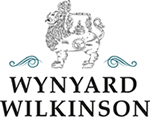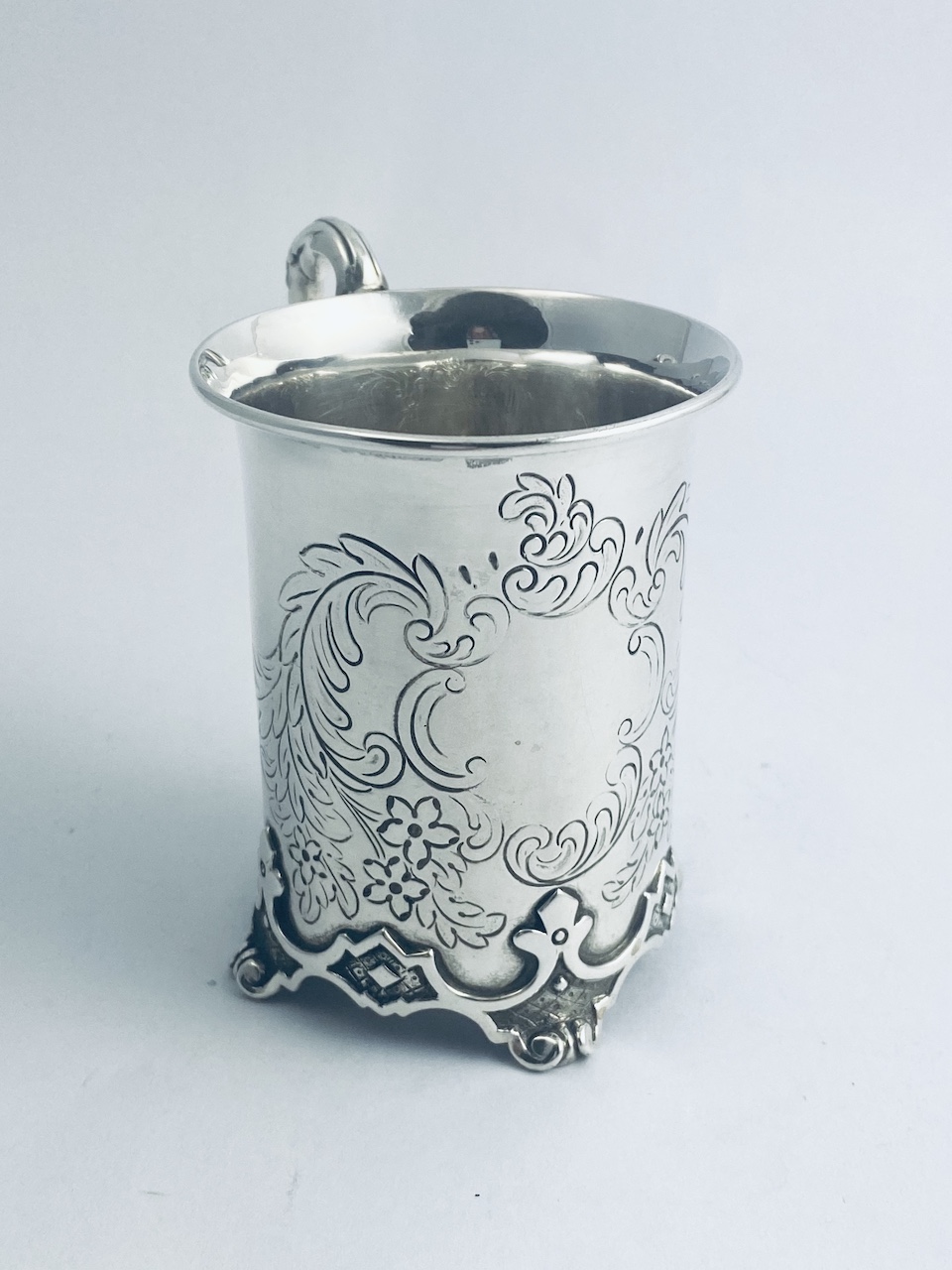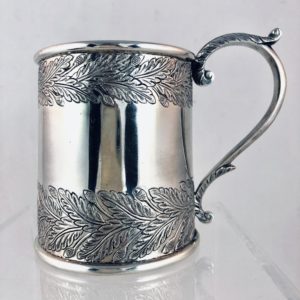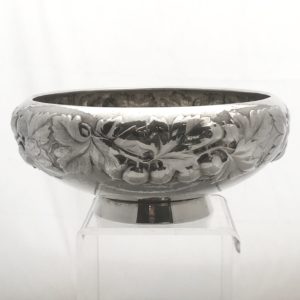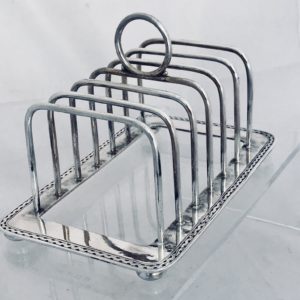Description
A circular, child’s silver mug with everted lip and a double C-scrolled, acanthus leaf-capped silver handle. The mug stands on an applied base, reminiscent of a coronet, with four everted feet. The sides of the mug are decorated with a rococo-revival escutcheon with foliate and floral mantling.
The mug and foot are made of the same good gauge of silver; the base alone is struck with identifying maker’s marks (see below).
Maker’s marks:
The maker’s mark, the name ‘SAVAGE’ in upper case against a striated background in a rectangular punch above a scrawny lion passant, an ill-defined Leopard’s Head and a third mark reminiscent of a British duty mark appear as a group set around the centering mark on the underside of the mug base. This is consistent with George Savage of Montréal, Québec Province, Canada.
Dimensions & Weight:
Diameter (lip & feet): 7.4 cm / 2 7/8 ins; Height: 9.8 cm / 3 7/8 ins. Max. Capacity: 250 ml / 0.45 pint; Weight: 162 gm / 5.2 oz
George Savage
Born in Huddersfield, Yorkshire, England, 27 July 1767; married 28 May 1787 to Hannah Whiteley to whom a first son, John Savage, was born in 1787, a second son, George Savage jnr, was born on 26 Nov 1792 and, amongst several other children, a son Joseph Savage born on 9 May 1798. George (senior) died in Montreal, Canada on 21 July 1845.
George Savage became established as a skilled watch and clockmaker in Huddersfield where, on 26 January 1808, he registered a patent for a new method of regulating or equalizing the force of power of the main spring in watches or other machines for measuring time. Savage’s patent was enthusiastically taken up at the top end of the watch-making trade.
Towards the end of 1816, however, George was arrested for debt. In January 1817 a commission of bankruptcy was issued against him and he was required to surrender to the Commissioners. There can be little doubt that these events led to his emigration to Canada, where he arrived in about 1818, in due course becoming a watchmaker and major retailer of silverwares in Montreal.
About 1840, George Savage took his son Joseph into partnership, and the firm became Savage & Son. Joseph Savage married Abigail Lyman, and about 1850 her brother Theodore joined the firm, which then became Savage and Lyman.
